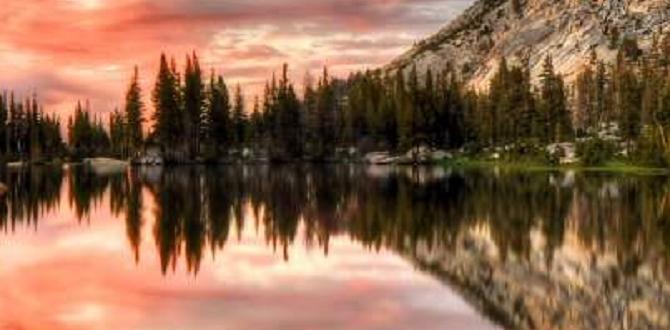For travelers seeking unique experiences beyond the iconic Taj Mahal, exploring offbeat destinations near Agra offers a refreshing adventure. Discover hidden gems and local culture with these essential day trips, providing a richer understanding of the region’s history and vibrant life.
Agra is a city brimming with history, most famously known for the magnificent Taj Mahal and Agra Fort. While these UNESCO World Heritage Sites are absolute must-sees, the magic of travel often lies in venturing a little further.
Many visitors stick to the well-trodden path, missing out on the incredible stories and sights that lie just a short drive away. Planning a day trip can feel overwhelming, especially if you’re unsure where to start or how to make the most of your limited time. But don’t worry! We’re here to guide you through some fantastic offbeat day trips from Agra, ensuring your journey is comfortable, memorable, and full of delightful discoveries. Get ready to explore the lesser-known treasures of Uttar Pradesh!
Why Venture Beyond the Taj?
While the Taj Mahal and Agra Fort are undeniably breathtaking, Agra’s surroundings hold a wealth of cultural and historical experiences waiting to be uncovered. These offbeat destinations offer a chance to escape the crowds, connect with local life, and witness a different facet of India’s rich heritage. Think ancient towns, serene natural landscapes, and fascinating historical ruins that tell their own unique stories.
For travelers who appreciate a more immersive and authentic experience, these day trips provide an invaluable opportunity. They’re perfect for those who have already marveled at Agra’s main attractions or who simply prefer to explore at a more relaxed pace, discovering hidden gems that often get overlooked.
Top Agra Offbeat Day Trips for Every Traveler
We’ve carefully curated a list of day trips that offer a blend of history, culture, and natural beauty. Each destination is easily accessible from Agra, making them perfect for a full day’s excursion. We’ll cover how to get there, what to expect, and why each place is a special escape.
1. Fatehpur Sikri: The Abandoned Mughal City
Just about 40 kilometers from Agra lies Fatehpur Sikri, a UNESCO World Heritage site that was once the capital of the Mughal Empire under Emperor Akbar. Built in the late 16th century, this red sandstone city was mysteriously abandoned after only a few years due to a shortage of water. Today, it stands as a remarkably well-preserved ghost city, offering a fascinating glimpse into Mughal architecture and urban planning.
Getting There:
- By Car/Taxi: This is the most convenient option, taking around 1 hour. You can hire a taxi from Agra for the day.
- By Bus: Local buses run from Agra to Fatehpur Sikri regularly from Idgah Bus Stand. It’s a more economical option but can be crowded and take longer.
What to See and Do:
- Buland Darwaza: The imposing 54-meter high gateway is one of the largest in the world and a stunning example of Mughal architecture.
- Jama Masjid: A beautiful mosque that complements Salīm Chishtī’s tomb.
- Salīm Chishtī’s Tomb: A serene and intricately carved white marble tomb, revered by people of all faiths.
- Diwan-i-Aam (Hall of Public Audience): Where the emperor addressed his subjects.
- Diwan-i-Khas (Hall of Private Audience): Famous for its central pillar with a capital of lifelike figures.
- Jodha Bai’s Palace: A grand palace believed to be the residence of Emperor Akbar’s Rajput wife.
Why it’s an Offbeat Gem:
While very popular, many tourists rush through Fatehpur Sikri. Taking your time to explore its courtyards, intricate carvings, and the stories behind its construction offers a much deeper appreciation than a quick glance. It feels like stepping back in time, with hardly anyone else around in the quieter corners of the complex.
2. Mathura & Vrindavan: The Land of Krishna
These twin holy cities, located about 50-60 kilometers from Agra, are the birthplace and childhood playground of Lord Krishna. Mathura is his birthplace, and Vrindavan is where he spent his youth. These cities are vibrant centers of devotion, filled with countless temples, bathing ghats along the Yamuna River, and a palpable spiritual atmosphere. For a truly immersive experience, consider visiting both.
Getting There:
- By Car/Taxi: Approximately a 1.5 to 2-hour drive from Agra. Hiring a car for both cities is recommended for optimal exploration.
- By Train: Mathura is a major railway junction. You can take a train from Agra Cantt to Mathura Junction. From Mathura, local transport can take you to Vrindavan.
What to See and Do in Mathura:
- Shri Krishna Janmabhoomi: The exact spot where Lord Krishna is believed to have been born.
- Dwarkadhish Temple: A popular and architecturally rich temple dedicated to Krishna.
- Kusuma Sarovar: A sacred tank with historical and picturesque surroundings.
- Vishram Ghat: A key ghat on the Yamuna River, known for its evening aarti.
What to See and Do in Vrindavan:
- Banke Bihari Temple: One of the oldest and most revered temples, known for its exquisite idol of Krishna.
- ISKCON Temple: A grand modern temple complex with beautiful architecture and chanting sessions.
- Radha Raman Temple: Another significant temple dedicated to Radha and Krishna.
- Kesi Ghat: A significant site where Krishna is said to have vanquished the demon Kesi.
Why it’s an Offbeat Gem:
Most tourists visiting Agra might skip these spiritual hubs, or only visit one briefly. Dedicating a day allows you to soak in the devotional energy, witness the vibrant rituals, and understand the deep cultural significance of Lord Krishna in India. The sheer number of temples and the devotional fervor make it a profound experience.
3. Bharatpur Bird Sanctuary (Keoladeo National Park): A Birder’s Paradise
For nature lovers and photographers, a day trip to Bharatpur Bird Sanctuary (now officially Keoladeo National Park), about 55 kilometers from Agra, is an absolute treat. This man-made wetland is a haven for a spectacular variety of resident and migratory birds. Migratory birds can be seen here between October and March, making it a prime location for birdwatching.
Getting There:
- By Car/Taxi: The quickest and most convenient, taking about 1 hour.
- By Train: Bharatpur Junction is well-connected by rail. You can take a short auto-rickshaw ride from the station to the park entrance.
What to See and Do:
- Birdwatching: The main activity! You can hire a local guide and a bicycle or a rickshaw to explore the park’s trails.
- Photography: With numerous species like Siberian Cranes (though rare now), various storks, pelicans, eagles, and kingfishers, it’s a photographer’s dream.
- Walking: Explore the designated paths and boardwalks to get closer to nature.
Important Information:
The park is a UNESCO World Heritage site and a Ramsar site. To protect the delicate ecosystem, vehicular access is restricted inside. You’ll need to walk, cycle, or hire a cycle rickshaw. Hiring a guide is highly recommended for spotting birds and learning about the local flora and fauna.
Why it’s an Offbeat Gem:
While known to serious birders, many general tourists overlook this sanctuary. It offers a peaceful escape into nature, far from the historical monuments. The sheer biodiversity packed into this relatively small area is astonishing, providing a refreshing change of pace and a chance to connect with India’s natural beauty.
4. Deeg: The Royal Summer Palace
Located approximately 90 kilometers from Agra, Deeg was once a significant place for the rulers of Bharatpur, the Jat dynasty. It’s renowned for its magnificent palace complex, known as the Deeg Palace or Deeg Fort, which features beautiful gardens, fountains, and pavilions. It served as a summer resort and a ceremonial seat for these rulers.
Getting There:
- By Car/Taxi: This is the most practical way to reach Deeg, taking around 2 to 2.5 hours.
- By Bus: Buses are available from Bharatpur to Deeg, which can then be combined with a trip from Agra to Bharatpur.
What to See and Do:
- Suraj Bhawan: A beautiful pavilion that was the heart of the palace complex.
- Gopal Bhawan: The main residential palace, known for its decorative interiors and museum.
- Kadam Kunj & Nand Bhawan: Other pavilions and structures contributing to the grandeur of the complex.
- The Gardens: Explore the sprawling Mughal-style gardens, designed to be filled with water from the surrounding moats.
Historical Significance:
Deeg Palace was strategically important due to its water management system, filling its moats and fountains from canals. The architecture reflects a blend of Mughal and Rajput styles. To learn more about conservation efforts and the history of such sites, resources like the UNESCO website offer valuable insights into heritage preservation in India.
Why it’s an Offbeat Gem:
Deeg offers a glimpse into the lives of the Maharajas and the unique water architecture of the region. It’s far less visited than other Mughal-era sites, allowing for a tranquil exploration of its grandeur. The sheer scale of the gardens and pavilions, especially when they were functional with water, must have been spectacular.
5. Pancchhi Gudha: A Glimpse of Rural Bliss
For travelers seeking a truly authentic rural Indian experience, Pancchhi Gudha, near Agra, offers a wonderful opportunity. This isn’t a typical tourist destination with monuments; it’s a chance to witness local life, visit local artisans, try authentic village food, and experience the simplicity and charm of daily village routines. (Note: Specific accessibility and organized tours for this might vary, requiring local arrangements.)
Getting There:
- By Car/Taxi: Essential for reaching this type of destination. Arrange a car from Agra, and ideally, ask your driver if they know a reliable contact or guide in the village.
What to Expect:
- Village Life: Observe farming practices, local markets, and the rhythm of daily life.
- Local Crafts: You might encounter artisans practicing traditional crafts like pottery, weaving, or block printing.
- Home-cooked Food: Experience authentic North Indian village cuisine, prepared with fresh, local ingredients.
- Cultural Immersion: Interact with villagers (with respect and understanding) to learn about their traditions and way of life.
Tips for Visiting:
- Respect is Key: Dress modestly, ask permission before taking photos of people, and be mindful of local customs.
- Hire a Local Guide (if possible): This enhances the experience and ensures respectful interaction.
- Keep it Simple: This is about experiencing a different way of life, not about seeking tourist attractions.
Why it’s an Offbeat Gem:
This is the definition of offbeat travel. It offers an unfiltered look at rural India, a stark contrast to the grandeur of Agra’s monuments. It’s for the curious traveler who wants to understand the heart and soul of a region beyond its famous landmarks. It’s a great way to gain perspective and connect with the people who form the backbone of the country.
Planning Your Offbeat Day Trip: Essential Tips
To ensure your day trips are smooth and enjoyable, some practical planning goes a long way. Focusing on comfort and convenience makes a huge difference, especially when you’re exploring less-familiar territories.
Transportation Options
Choosing the right mode of transport is crucial for comfort and efficiency.
- Hiring a Private Car/Taxi: This is generally the most comfortable and flexible option. You can hire a car for the day from Agra, including your driver. This allows you to visit multiple spots, control your schedule, and have climate control. Ensure the car is in good condition and the driver is experienced with the routes.
- Public Transportation (Buses & Trains): While more economical, these can be crowded and less predictable. Trains are great for reaching major towns like Mathura or Bharatpur from Agra Cantt. From there, you might need local auto-rickshaws or taxis. Buses are best for shorter distances between towns.
- Ride-Sharing Apps: For transport within Agra or to very nearby locations, apps can be useful, but availability for longer day trips outside the city might be limited.
Packing Essentials for a Day Trip
Comfort is paramount. When you’re focused on enjoying the sights, you don’t want to be bothered by practical inconveniences. For any day trip, especially in a warm climate like Agra’s, packing strategically is key.
- Comfortable Clothing: Light, breathable fabrics like cotton are a must. Modest attire is respectful for visiting religious sites.
- Good Walking Shoes: You’ll be doing a lot of walking, so comfortable, broken-in shoes are essential.
- Sun Protection: A wide-brimmed hat, sunglasses, and potent sunscreen are crucial.
- Water Bottle: Staying hydrated is vital. Carry a reusable water bottle to refill. You can buy sealed water too, but carrying your own is more eco-friendly.
- Snacks: While you can find food, having some energy bars or fruits can be handy between meals.
- Basic First-Aid Kit: Band-aids, antiseptic wipes, and any personal medications.
- Hand Sanitizer & Wet Wipes: Essential for maintaining cleanliness, especially when out and about.
- Camera/Phone: To capture memories! Make sure they are fully charged.
- Power Bank: To keep your devices charged throughout the day.
- Cash: Smaller denominations are useful for local purchases, tips, and smaller transportation needs.
Traveler Comforts: Beyond the Basics
For some travelers, specific needs can make a significant difference in their journey’s comfort level. For instance, ensuring personal care needs are met can reduce travel-related stress immensely. If you require them, carrying adult diapers or child diapers discreetly and comfortably can allow you to focus on the adventure rather than worry. Modern options are very absorbent and discreet, making them a practical choice for a long day of exploring without easy access to restrooms.
For families, managing children’s needs on a day trip is just as important. Having child diapers readily available means less anxiety about travel time or unexpected delays. Similarly, for adults who may need them for various reasons, ensuring you have a reliable supply of adult diapers can be a game-changer for stress-free travel, allowing you to fully engage with the experience.
Sample Itinerary: A Glimpse of a Day Trip to Fatehpur Sikri
Let’s imagine a typical day trip to Fatehpur Sikri. This gives you an idea of how you might structure your day for maximum enjoyment.
Morning (8:00 AM – 12:00 PM)
- 8:00 AM: Start from your hotel in Agra after breakfast. Head out in your pre-booked car.
- 9:00 AM: Arrive at Fatehpur Sikri. Hire a local guide at the entrance if you wish – they can offer historical insights.
- 9:15 AM – 11:30 AM: Explore the key monuments: Buland Darwaza, Jama Masjid, Salīm Chishtī’s Tomb, Diwan-i-Aam, Diwan-i-Khas, and Jodha Bai’s Palace. Take your time, soak in the atmosphere, and imagine life here centuries ago.
- 11:30 AM – 12:00 PM: Browse the shops outside the complex for souvenirs or local handicrafts.
Midday (12:00 PM – 3:00 PM)
- 12:00 PM: Depart from Fatehpur Sikri.
- 1:00 PM: Arrive at a pre-decided restaurant for lunch. Opt for a local eatery for authentic flavors, or a more comfortable restaurant depending on your preference.
- 2:00 PM: Relax after lunch before heading back.
Afternoon (3:00 PM onwards)
- 3:00 PM: Begin your drive back to Agra.
- 4:00 PM: Arrive back at your hotel. You can then relax or plan for an evening stroll around Agra.






